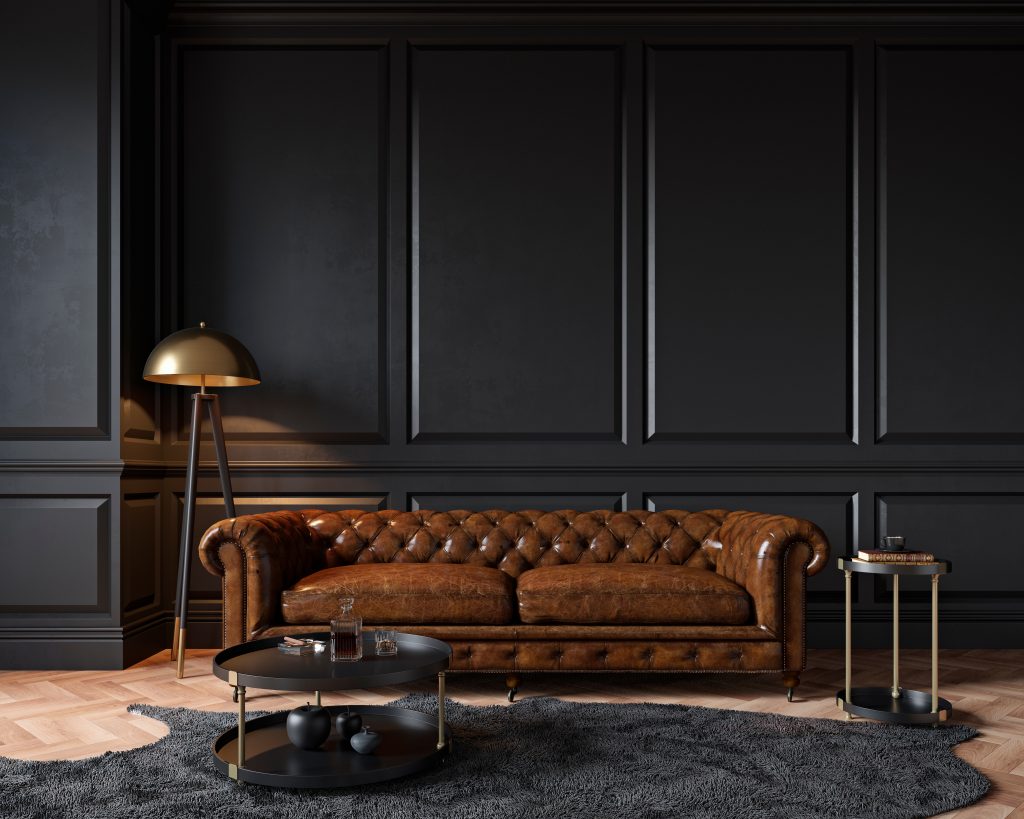Wall panelling is more than just a method to add aesthetic charm to a space; it’s an efficient way to insulate a room and conceal imperfections on walls. Emerging as a popular trend in UK homes, this decorative feature can transform interiors from the mundane to the distinguished. Available in various materials, styles, and designs through providers like Trade Wall Panels, this decorative feature suits any taste, ensuring that each room can exhibit a unique personality.
Installation of wall panelling requires careful measurement and planning to ensure a precise and symmetrical finish. Whether opting for a do-it-yourself approach or seeking professional installation, one must be aware of the preparation needed before undertaking this interior project. After installation, maintenance is straightforward, allowing the beauty of the panels to endure through time.
Key Takeaways
- Wall panelling enhances aesthetic appeal and provides practical benefits.
- Accurate planning and preparation are essential for successful installation.
- Once installed, wall panelling is low maintenance and long-lasting.
Understanding Wall Panelling
Wall panelling offers both aesthetic charm and functional benefits, providing texture and character to various interior spaces. It is an architectural element that can range from traditional to contemporary designs.
Terms and Definitions
- Wall Panelling: Architectural elements that are installed on walls to add texture, character, and detail.
- Traditional Panelling: Panelling styles that are deeply rooted in history, often featuring classic patterns.
- Contemporary Panelling: Modern panelling designs that complement current trends and styles.
History of Wall Panelling
Wall panelling originally served a practical purpose in insulation but has evolved to become a significant aspect of interior design. It was particularly favoured during the Victorian era for its ability to add grandeur and intricate detail to the stately homes of that time.
Types of Wall Panelling
- Shaker Style: Characterised by a square or rectangular pattern, offering three-dimensional depth and a homely feel.
- Slatted Wood Panels: Long, thin strips of wood that add a natural character and modern touch.
- Board and Batten: Alternating wide boards and narrow wooden strips, providing a structured and traditional aesthetic.
Benefits of Wall Panelling
Wall panelling enhances a room by:
- Aesthetic Appeal: Adding visual interest through various textures and patterns.
- Versatility: Available in diverse styles, from Victorian elegance to modern simplicity.
- Durability: Acting as a protective layer for walls whilst withstanding daily wear and tear.
Selecting the Right Materials
When choosing materials for wall panelling, it is crucial to consider the panel type, its resistance to moisture, and its overall durability in comparison to other materials.
Types of Materials
Various materials are available for wall panelling, each offering distinct characteristics. The most common options include:
- Medium Density Fibreboard (MDF)
- Hardwoods (oak, walnut)
- Softwoods (pine, cedar)
- Laminates
- Veneers
Comparing MDF and Wood Panels
Medium Density Fibreboard (MDF) is favoured for its affordability and smooth surface, making it ideal for painting. In contrast, wooden wall panels provide a traditional look, with natural grains imparting unique charm. Here’s a quick comparison:
| Aspect | MDF Panels | Wooden Wall Panels |
|---|---|---|
| Cost | Generally less expensive | Pricier, varies with wood type |
| Aesthetic | Smooth finish, paint-friendly | Natural wood grain, warm appearance |
| Weight | Lighter, easy to handle | Heavier, may require additional support |
| Durability | Sensitive to moisture without treatment | Naturally durable but can warp with moisture |
Moisture Resistant Options
For areas with high humidity, moisture resistant MDF is a practical choice. Its engineered composition reduces the risk of warping and swelling, making it suitable for use in kitchens and bathrooms. It’s crucial to pair it with the appropriate paint formulated for wet environments to ensure longevity.
Design and Planning
In the process of wall panelling, design and planning set the stage for a successful installation. The reader needs to consider the theme, colour palette, and size requirements to ensure the desired outcome is both practicable and aesthetically pleasing.
Choosing a Theme
When selecting a theme for wall panelling, one should decide whether a classic look such as the Shaker style or a modern twist is more suitable. The style choice will dictate the type of panels and the overall feel of the room, with Shaker panelling offering a timeless simplicity and modern designs providing a more contemporary edge.
Colour Selection
Colour plays a crucial role in the visual impact of wall panels. It is important to choose a colour that complements the room’s existing decor and desired ambiance. Neutral tones can create a subtle elegance, while bolder hues may serve as an eye-catching feature. Test swatches on the wall can assist in visualising how different colours will interact with the room’s lighting and furnishings.
Measuring and Calculating Requirements
Accurate measuring is essential to purchase the correct amount of panelling materials. One should use a tape measure to record the dimensions of the wall and then use a panel calculator to determine the necessary quantity of panels. This ensures that cuts are minimised and the panelling fits precisely.
| Step | Tool or Method |
|---|---|
| Wall Dimensions | Tape Measure |
| Panel Calculations | Online Calculator |
Measuring should account for any windows, doors, or irregularities in the wall to avoid unnecessary wastage of materials.
Preparation and Installation
Preparation and installation are critical steps in setting up wall panelling, where the right tools, materials, and techniques ensure a lasting and attractive finish.
Tools and Equipment
To begin, one will need the following:
- Measuring tape: For precise measurements.
- Spirit or laser level: To ensure panels are aligned perfectly horizontal or vertical.
- Hammer or nail gun: For securing panels.
- Adhesive: A high-strength, instant grab glue for bonding panels to the wall.
- Sandpaper: Various grits for smoothing walls.
- Fine-toothed saw: To cut panels accurately.
Primers and Paints
Primer application is essential for an even and durable finish. Choose:
- Moisture-resistant primer: For areas prone to dampness.
- Quality paint: Select a suitable type for the condition of the room and intended use.
Creating the Layout
One must carefully design the layout:
- Measure the wall: Take accurate dimensions to compute the panel sizes.
- Mark the wall: Use the spirit or laser level to draw reference lines where panels will be fixed.
Fixing Methods
Panels can be fixed using:
- Adhesive: Apply an instant grab adhesive to the panel and press it onto the wall.
- Nails: For added strength, one may also use nails, ensuring they are hammered in at even distances.
Before installation, walls should be clean, dry, and smooth. If necessary, caulk can be applied to fill in any gaps after fixing the panels. Remember that DIY wall panelling is a process that may require patience and precision, but with the right approach, it leads to a transformative result.
DIY Wall Panelling
DIY wall panelling can transform a room, adding character and dimension to any space. It’s a project accessible to many, involving a series of clear steps and common challenges to be aware of.
Step-by-Step Guide
- Measurements: One should first measure the wall to determine the number of panels needed.
- Materials: Acquire all necessary materials, such as moisture-resistant MDF panels, grab adhesive, filler, and decorators caulk.
- Preparation: The wall must be cleaned and must be dry. Any old wall coverings should be removed.
- Cutting: Cut the panels to size, ensuring each piece matches the area it will cover.
- Adhesive: Apply grab adhesive to the back of each panel. One can use a zigzag pattern for firm adhesion.
- Application: Position the panel against the wall, pressing firmly and ensure complete contact. It may be necessary to use pins to hold the panels in place while the adhesive sets.
- Caulking: Once panels are secure, use decorators caulk to fill any gaps, ensuring a seamless finish.
- Painting: Apply a primer suitable for MDF, followed by at least two coats of paint, allowing for adequate drying time between coats.
Common DIY Challenges
- Uneven Walls: Panels may not sit flush against the wall if it’s uneven. Using a spirit level is crucial to ensure panels are straight.
- Cutting Accuracy: Precision is key when cutting panels. Misaligned cuts can lead to gaps and an unprofessional finish.
- Adhesive Timing: Grab adhesive has a quick setting time. One must work swiftly yet accurately.
- Finish Quality: Achieving a smooth finish with filler and paint requires patience and attention to detail. It’s also important to sand down filler before painting to avoid an uneven texture.
Styling and Decor
Wall panelling can revolutionise a room’s aesthetic, offering both traditional elegance and sleek, modern designs. It serves as a textured backdrop that adds depth and character to any interior space.
Incorporating into Interior Design
When integrating wall panelling into interior design, one can opt for a range of styles to suit the desired ambience of a room. For a classic and elegant touch, traditional wainscoting or shaker-style panels add a sense of timeless sophistication, ideal for living rooms or dining areas. In contrast, ultra-modern decorative wall panels with 3D designs or metallic finishes can transform a space into a contemporary showcase, fitting for an office or an entertainment room.
- Classic Styles:
- Wainscoting
- Shaker panels
- Modern Styles:
- 3D designs
- Metallic finishes
Creating a cosy and warm atmosphere involves choosing panelling with rich woods or soft colours. The texture and depth provided by the panels can enhance the feeling of warmth within a room, making it appear more inviting.
Accessorising with Wall Panelling
Wall panelling can be more than just a background element; it can also serve as a foundation for accessorising a space. Decorative features like mirrors, artwork, or shelving can be strategically placed on or around the panels to create visual interest and reflect personal style.
- Decorative Features:
- Mirrors: Enhance the perception of space.
- Artwork: Adds a splash of personality.
- Shelving: Functional and stylish.
In the era of Instagram and other social media platforms, wall panelling provides an excellent opportunity to create visually appealing backdrops that can become the highlight of a photograph. Selecting the right lighting to accentuate the textures and shadows of the panels can further enhance their impact and appeal in photos shared online.
Care and Maintenance
Caring for wall panelling ensures longevity and maintains its aesthetic appeal. Wall panels need regular dusting to prevent the accumulation of dirt. One should use a soft cloth or duster for this purpose. For deeper cleaning, a damp cloth may be used, but one must avoid soaking the panels to prevent water damage.
If an intensive clean is necessary, especially for high-touch areas, a mild detergent can be diluted with water. The solution should be applied with a soft cloth, carefully followed by wiping with a dry cloth to remove any moisture.
Preventive Care:
- Ensure good ventilation to avoid the build-up of damp, which can lead to mould.
- Keep panels dry and quickly attend to any spills or moisture.
Spot Cleaning:
- Address spills immediately with a lightly dampened cloth.
- For marks or stains, use a non-abrasive cleaner specific to the panelling material.
Periodic Maintenance:
- Inspect panels regularly for signs of wear or damage.
- Reapply protective finishes as required for wood panels.
| Material | Cleaning Method | Maintenance Tips |
|---|---|---|
| Wood | Damp cloth, wood cleaner | Polish or oil periodically |
| MDF | Damp cloth, mild detergent | Prime and repaint as needed |
| PVC | Soft cloth, soapy water | Check for brittleness with age |
Always refer to the manufacturer’s instructions for care specific to the panelling material. Avoid using abrasive cleaners or pads that could scratch or dull the surface. Regular maintenance will keep wall panelling in excellent condition and preserve its beauty for years to come.
Trends and Innovations
In the world of interior design, wall panelling stands out for its ability to infuse elegance and sophistication into various spaces. This section delves into the latest trends and advancements in wall panelling that are shaping the aesthetic of interiors across the UK.
Popular Styles and Patterns
Shaker Style: A timeless trend, Shaker style panelling, characterised by its clean lines and classic look, continues to be a favourite. This style often comes in the form of a pattern kit, enabling a quick transformation of any room to exude a sense of heritage charm.
Board and Batten: Offering a three-dimensional depth that helps elevate plain walls, board and batten patterns are equally appreciated for their simplicity and their dramatic textural contrast. The vertical battens create the illusion of height, making this style suitable for rooms with lower ceilings.
Shiplap: Known for its horizontal installation, shiplap brings a rustic, yet modern appeal to interiors. Its overlapping boards provide both visual interest and durability, making it a preferred choice for both residential and commercial spaces.
Geometric Panelling: Geometric shapes have taken the design world by storm. From hexagonal patterns to intricate diamonds, geometric panelling adds a modern and artistic flair to any wall it graces.
Slatted Wood Panels: The growing trend of slatted wood panels offers an architectural element that introduces texture and shadow play into the room. This style ranges from tightly spaced slats to wider arrays that can be utilised as a unique visual divider.
Technological Advancements in Materials
Materials used in wall panelling have seen significant innovation, moving beyond traditional wood and MDF. New materials now offer superior durability, moisture resistance, and environmental sustainability.
Thermally Modified Wood: Undergoing a process that alters the cell structure of the wood, this material offers increased resistance to decay and moisture, making it perfect for bathroom panelling or high-humidity environments.
Eco-Friendly Composites: Composites made from recycled plastics and wood fibres have entered the market, catering to the environmentally conscious consumer. These panels are not only sustainable but also offer a wide variety of textures and finishes.
Engineered Surfaces: Advances in material science have produced engineered surfaces that mimic the look and feel of natural materials. These products possess enhanced properties such as scratch resistance and easy maintenance, appealing to both commercial and residential settings.
Through thoughtful selection among these styles and innovative materials, individuals and designers can create spaces that not only boast aesthetic appeal but also incorporate functionality and sustainability.
Transforming Specific Rooms
Wall panelling offers a transformative effect for various rooms within a home, providing both aesthetic appeal and practical benefits. From the serenity of the bedroom to the liveliness of the living room, panelling can be customised to suit different spaces.
Bedroom Panelling Ideas
In the bedroom, wall panelling can create a peaceful and restful ambience. Floor to ceiling panelling adds a touch of grandeur and can make the room appear taller. For a more subtle approach, one can opt for half-wall panelling, often finished with a dado rail that provides a classic touch. Traditional styles like wainscoting introduce elegance, whereas shaker style or batten and board designs offer a contemporary twist, often best highlighted when painted in calming hues.
Enhancing the Bathroom
In bathrooms, the choice of panelling must balance aesthetic grace with moisture resistance. Waterproof panels, or those treated to resist humidity, find their place here. Wall panelling in bathrooms often extends to part or all of the shower area. Tongue and groove panelling brings in a nautical, spa-like feel, which goes especially well with soft colours and natural materials. Combined with clever lighting, bathroom wall panels can turn it into a relaxing sanctuary.
Living Room Focal Points
The living room offers the perfect canvas for a feature wall, with panelling presenting an opportunity to make a bold statement. A full feature wall of panelling acts as both a focal point and a conversation starter. It can be employed to add depth and texture, with options ranging from classic raised panels to modern geometric patterns. To elevate the design, one could consider incorporating shelves or niches within the panelling to display art or other decor items.
Each room benefits from a tailored approach to wall panelling, designed to enhance the room’s function and aesthetic.
Frequently Asked Questions
This section addresses common queries related to wall panelling, providing clear and concise answers to assist homeowners in making informed decisions about their interior design projects.
What are the different types of wall panelling materials available?
Various materials are utilised for wall panelling, including natural wood, MDF (Medium Density Fibreboard), PVC, and plywood. Each has its advantages in terms of aesthetics, cost, and installation methods.
How should one determine the appropriate height for half wall panelling?
The ideal height for half wall panelling is typically one-third of the wall height. This proportion often creates a balanced aesthetic. However, one might adjust this based on ceiling height and personal preference.
Can you provide some wall panelling ideas for a living room?
Living room wall panelling can include traditional shaker style panels, contemporary 3D designs, and rustic wood planks. Panels can be installed vertically or horizontally and painted to match or contrast with the room’s colour scheme.
What are the steps for DIY installation of wall panelling strips?
DIY installation of wall panelling strips involves measuring the wall, marking the positions for panels, cutting the material to size, applying adhesive or using fixings for attachment, and ensuring they are aligned properly before securing them firmly.
How can one calculate the correct spacing when installing wall panelling?
One must divide the wall’s width by the number of panels plus one to calculate the spacing between wall panelling strips. This allows for an equal distribution of panels and spaces across the wall surface.
What considerations should be taken into account when working with wall panelling corners?
For wall panelling corners, one should measure and cut panels accurately to ensure a tight fit. Mitre cuts may be necessary for neat joins. Also consider the expansion and contraction of materials in different environmental conditions.


